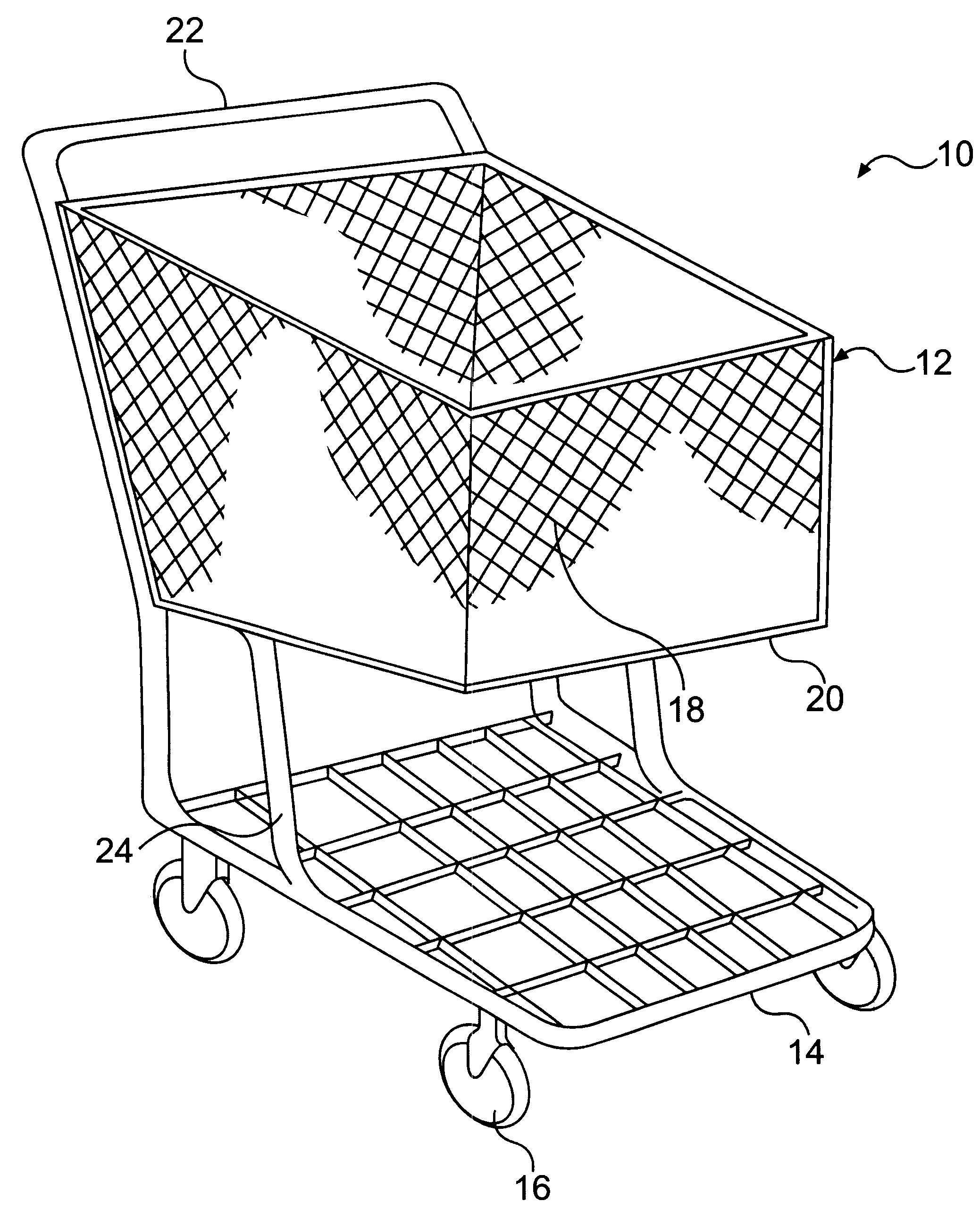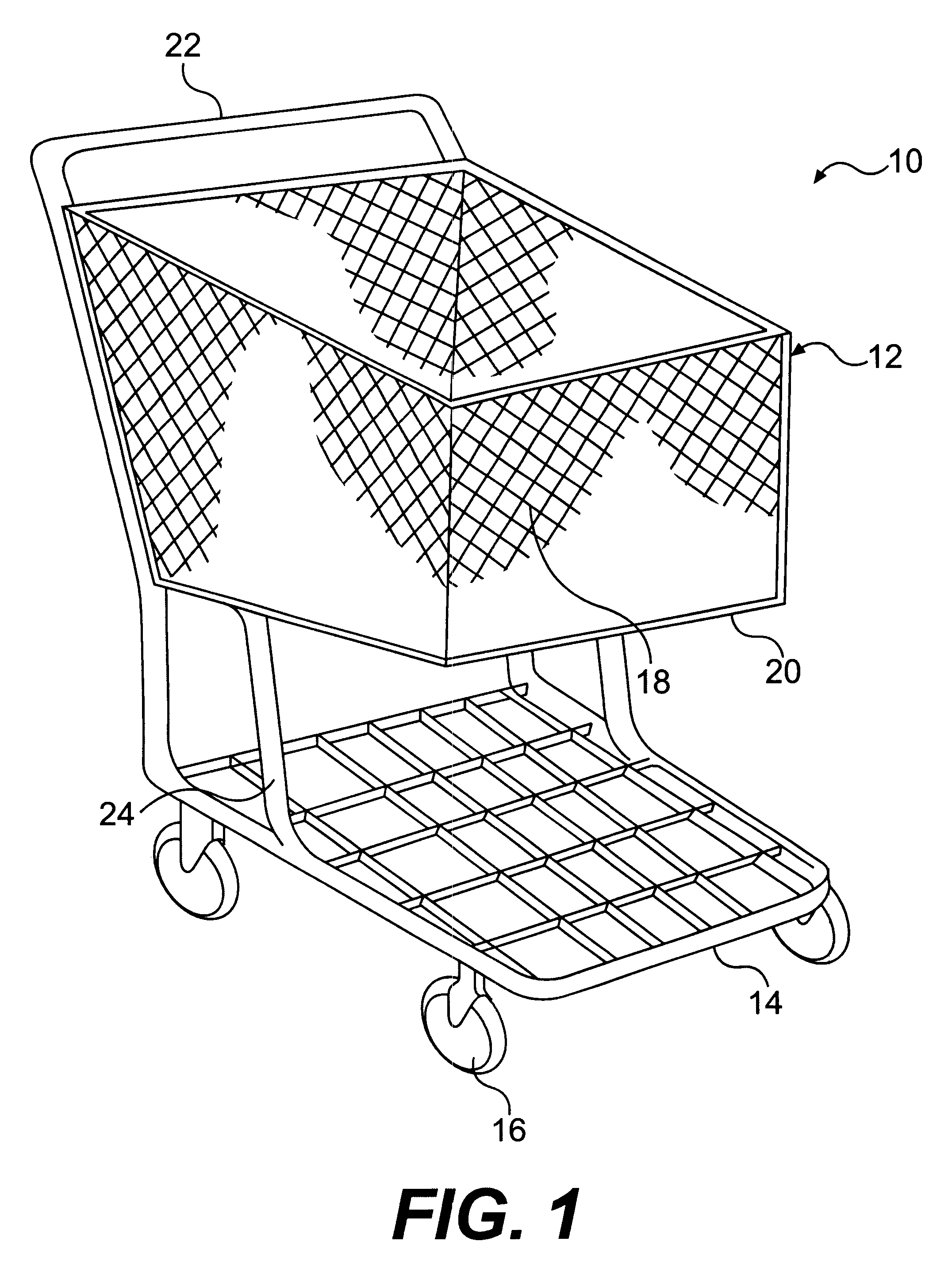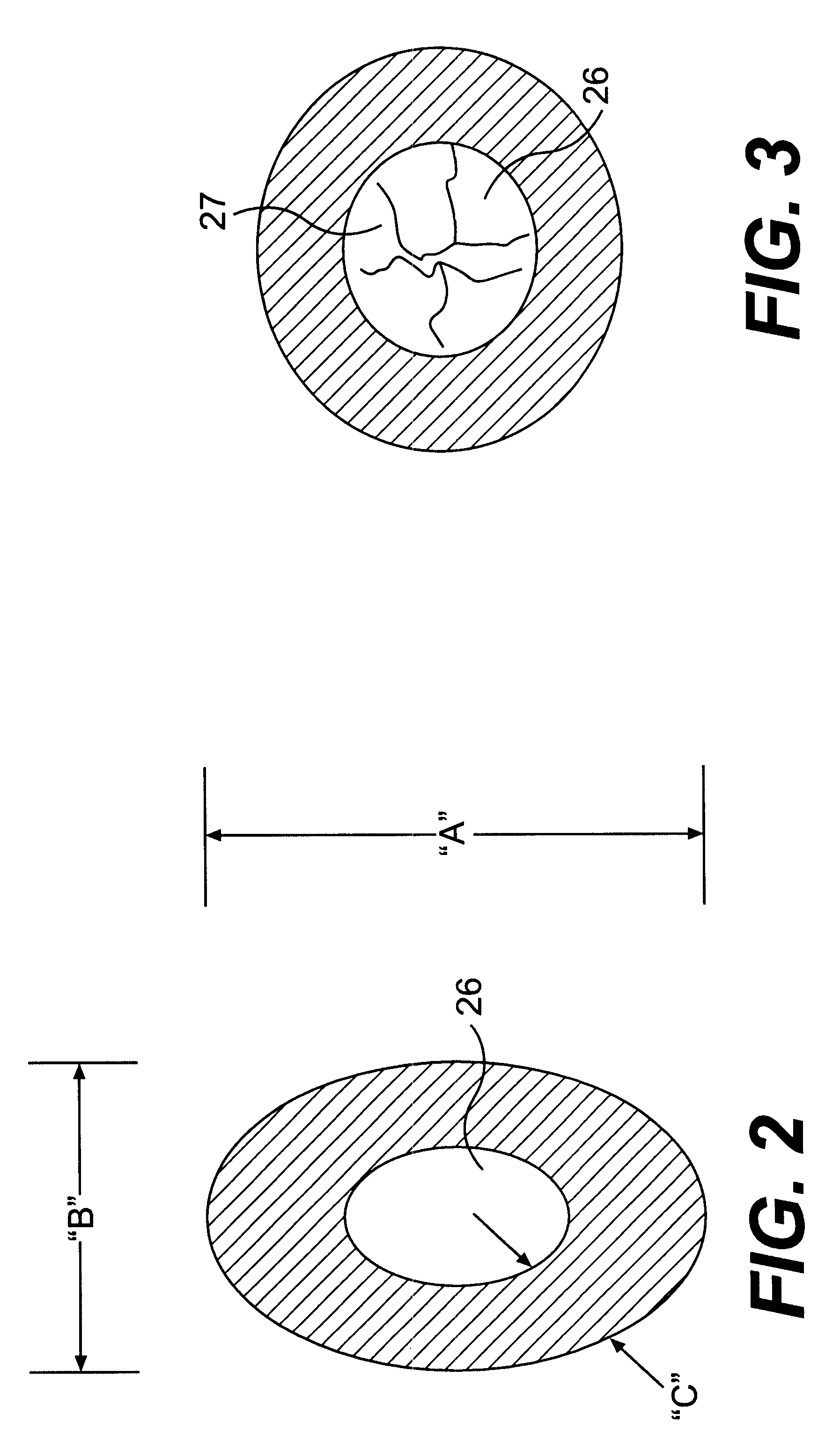Method of molding a cart using molding processes
a cart and process technology, applied in the field of cart molding, can solve the problems of steel carts that have a tendency to weather badly, bend and twist, and time-consuming and expensive assembly process
- Summary
- Abstract
- Description
- Claims
- Application Information
AI Technical Summary
Problems solved by technology
Method used
Image
Examples
Embodiment Construction
The method of molding a shopping cart according to the present invention is preferably performed using high pressure or low pressure injection molding techniques. These techniques include (i) high pressure gas assist injection molding, (ii) low pressure gas assist injection molding, (iii) high pressure foam injection molding, (iv) low pressure foam injection molding and (iv) a combination of the above. It should be recognized that the low pressure gas assist injection molding process is also referred to as structural web molding process which is capable of providing substantially hollow channels through the molded component. The use of high pressure gas assist injection molding also forms substantially hollow channels through the molded component. As referred throughout the present description, the hollow channel may have various symmetrical and non-symmetrical cross sections throughout the molded component, and may include cross hairs extending between the inner walls of the channe...
PUM
| Property | Measurement | Unit |
|---|---|---|
| diameter | aaaaa | aaaaa |
| temperature | aaaaa | aaaaa |
| temperature | aaaaa | aaaaa |
Abstract
Description
Claims
Application Information
 Login to View More
Login to View More - R&D
- Intellectual Property
- Life Sciences
- Materials
- Tech Scout
- Unparalleled Data Quality
- Higher Quality Content
- 60% Fewer Hallucinations
Browse by: Latest US Patents, China's latest patents, Technical Efficacy Thesaurus, Application Domain, Technology Topic, Popular Technical Reports.
© 2025 PatSnap. All rights reserved.Legal|Privacy policy|Modern Slavery Act Transparency Statement|Sitemap|About US| Contact US: help@patsnap.com



